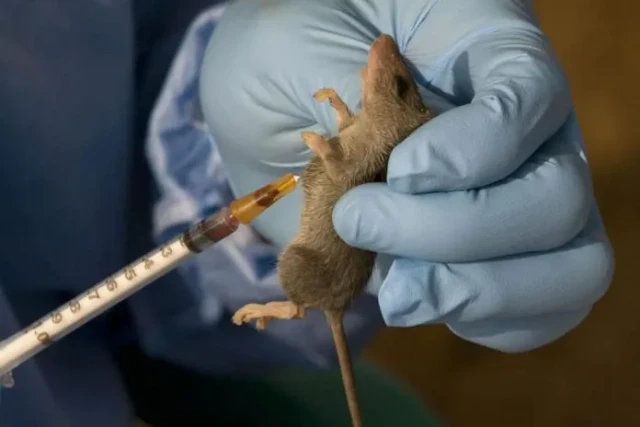The Nigerian Federal Government, through the Nigeria Centre for Disease Control and Prevention (NCDC), has reported that the Lassa fever outbreak in the country predominantly affected Ondo, Bauchi, and Edo states from January 1 to March 31, 2025.
During this time, a total of 660 cases were documented, with Ondo reporting 198 cases, Bauchi 165, and Edo 105.
On Wednesday in Abuja, Dr. Jide Idris, the Director-General of the NCDC, briefed journalists, stating that these states accounted for over 70 percent of the confirmed cases in 2025.
Lassa fever is a viral hemorrhagic illness primarily spread through contact with the urine or feces of infected rats, and can also be transmitted through bodily fluids, contaminated objects, or medical equipment. Symptoms include fever, sore throat, headache, vomiting, muscle pain, and, in severe cases, bleeding from body openings.
Idris highlighted that the three states contributed to 71 percent of the confirmed Lassa fever cases between January and March 2025, with Ondo representing 30 percent, Bauchi 25 percent, and Edo 16 percent.
He mentioned that the NCDC had ramped up a nationwide multi-sectoral response through its activated Incident Management System to manage the public health crisis across the affected regions.
“Our response, as cases rise in these epicenter states, focuses on early detection, case management, risk communication, and community engagement,” he said, noting that the transmission of the virus remains active across several local government areas, affecting 28 states and 125 LGAs this year. Idris reported that 122 deaths had occurred so far, which corresponds to a case fatality rate of 18.5 percent higher than the 17.5 percent observed in the same timeframe in 2024.
To hinder the virus's spread, he stated that the NCDC has dispatched National Rapid Response Teams to hotspots, trained health workers on infection control, and increased community awareness initiatives.
The Director-General emphasized the significance of early visits to health facilities to mitigate fatalities, disclosing ongoing partnerships with major organizations, such as the World Health Organisation (WHO), Médecins Sans Frontières (MSF), and the African Field Epidemiology Network (AFENET), to bolster surveillance, clinical care, and public knowledge.
He further indicated that the agency is backing research efforts through the CEPI-funded Enable Lassa Fever Program 1.5 and implementing the Coalition for Epidemic Preparedness Innovations (COPE II) strategy to enhance preparedness and response to outbreaks.
Idris reiterated that Lassa fever, an acute viral hemorrhagic illness mainly transmitted by rodents, continues to be a significant health risk, especially in rural areas where access to prompt healthcare is restricted.
“We are collaborating closely with state health ministries, environmental health officials, and international partners to contain the outbreak and lessen its impact,” Idris stated.
He also announced the upcoming launch of a Lassa fever advocacy toolkit and the resumption of monthly webinars focused on ongoing case management training for frontline healthcare workers.
Although confirmed case numbers decreased from 41 in Week 12 to 14 in Week 13 of 2025, the NCDC leader urged Nigerians to stay vigilant, practice good hygiene, and avoid contact with rodents and their excrement. “Collective action is vital to bringing this outbreak to an end.
We must act quickly, in unison, and at every societal level,” Idris concluded.




















